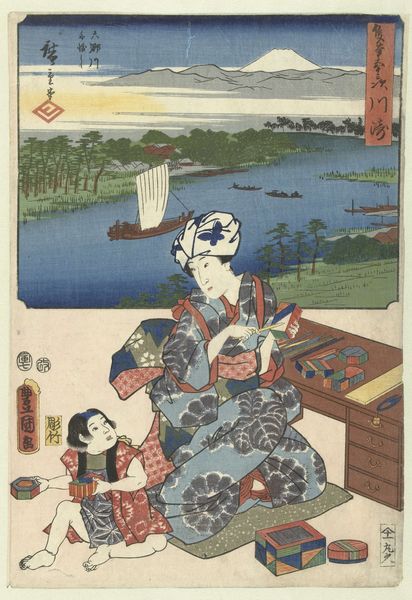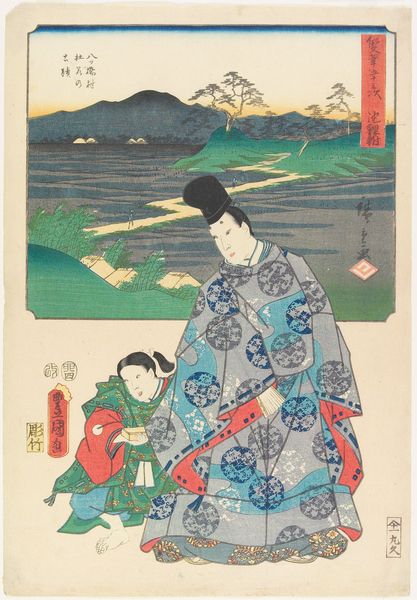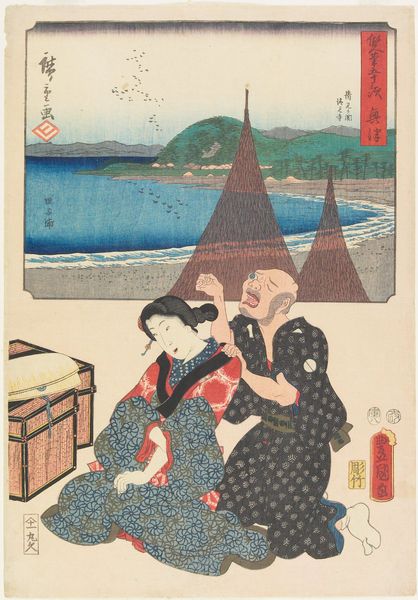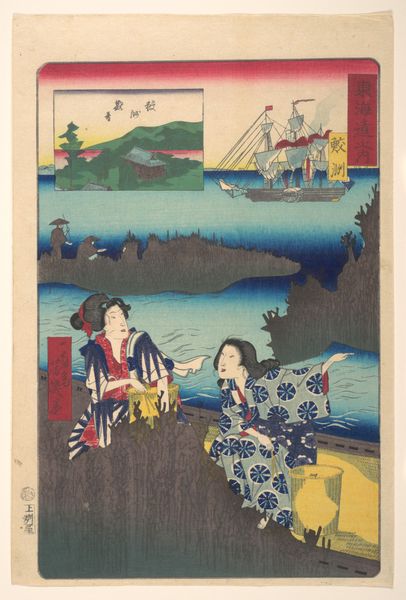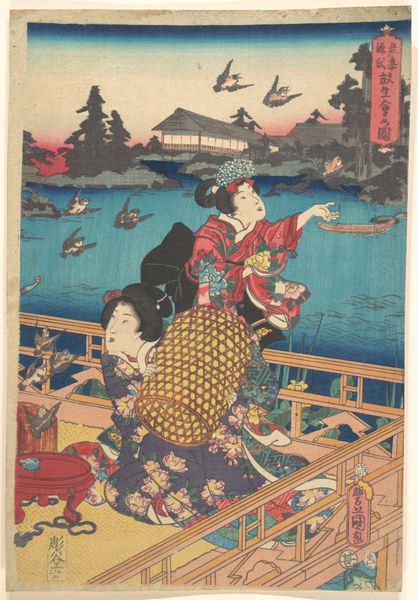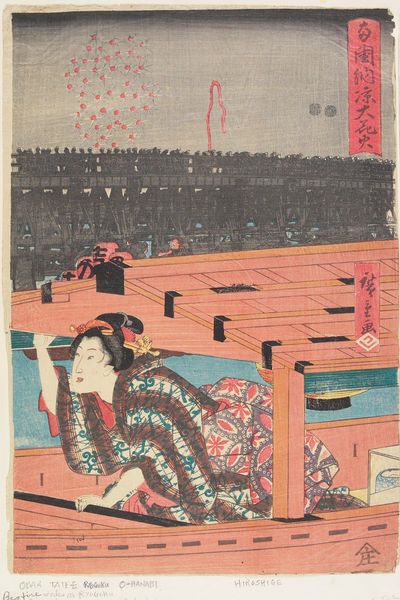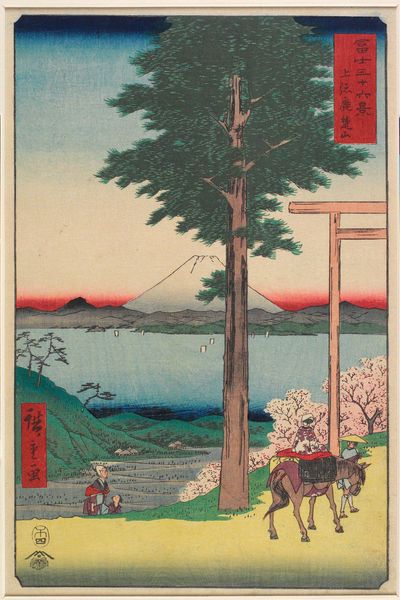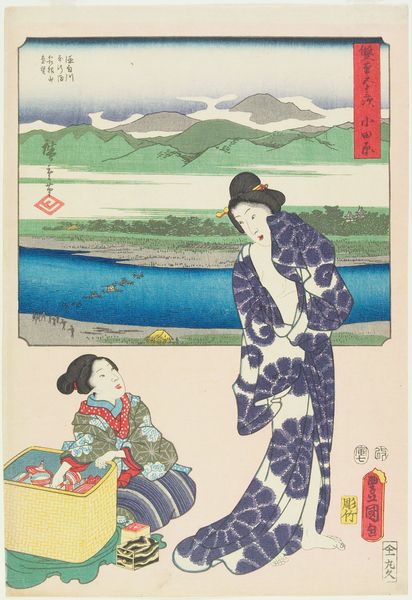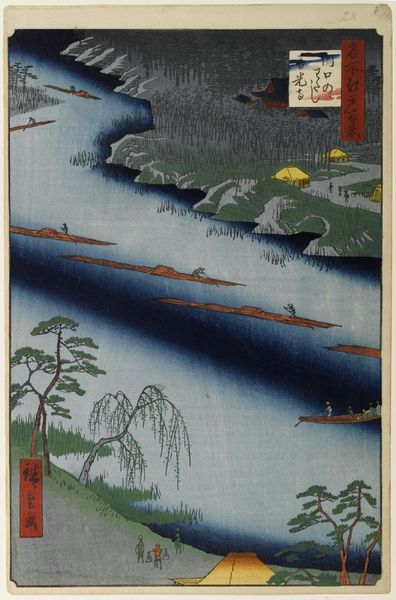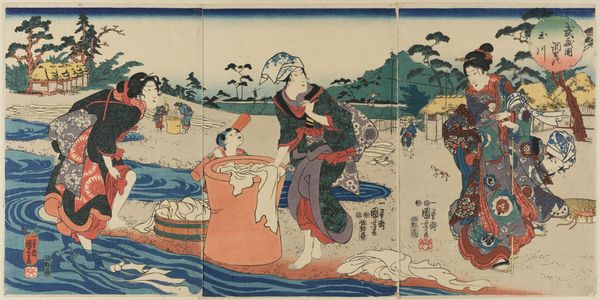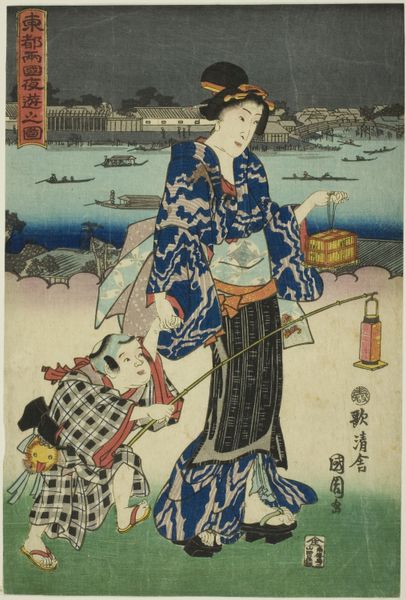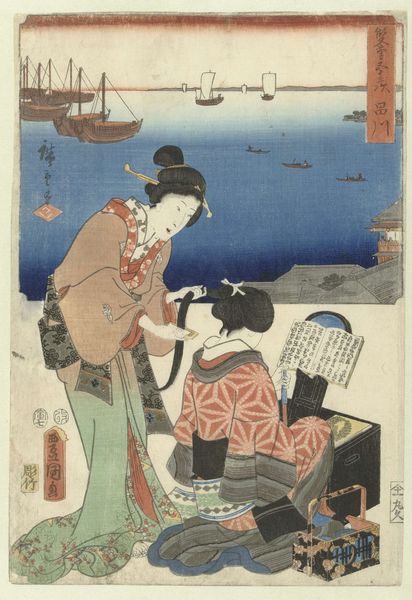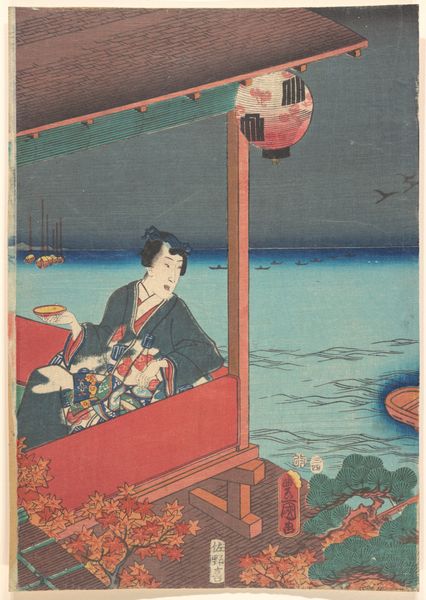
print, ink, woodblock-print
# print
#
asian-art
#
landscape
#
ukiyo-e
#
figuration
#
ink
#
woodblock-print
#
genre-painting
Dimensions: 14 1/2 × 10 1/8 in. (36.8 × 25.7 cm) (image, vertical ōban)
Copyright: Public Domain
Editor: Here we have Utagawa Kunisada's woodblock print, Kawasaki, dating from the mid-1850s. It has such a charming, domestic feel. The composition is split between the indoor scene and the tranquil landscape of the river. What's your take on this piece? Curator: The division you point out is central to understanding Ukiyo-e. The term itself translates to "pictures of the floating world". While seemingly domestic, these images gained immense popularity precisely as consumer objects catering to the rising merchant class in Edo. Notice how the distant landscape almost acts as a backdrop, a scene within a scene. Editor: That's a cool observation! Like they're selling not just the present but also the dream of travel, even a kind of aspirational lifestyle? Curator: Exactly. The "floating world" was a world of leisure and entertainment. Kunisada is presenting both—the apparent peace of the present moment with the implied possibility of future journeys. How do you think this kind of imagery affected the perception, even the construction, of Japanese identity at the time? Editor: Wow, that shifts my understanding. It makes me think about the commercialization of culture, and how art was involved in shaping national narratives. This was much more than just a pretty print, right? Curator: Precisely! It reflects evolving socio-economic structures and their influence on artistic expression and how this, in turn, molds culture. The interplay of tradition, commerce, and identity... it is a constant negotiation we continue to see today. Editor: I will never look at a seemingly innocent woodblock print the same way again.
Comments
No comments
Be the first to comment and join the conversation on the ultimate creative platform.
